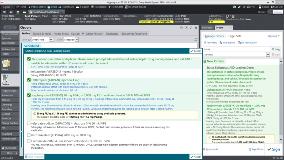Implementation of a Computerized Anti-Epileptic Drug Panel to Reduce Time to Treatment for Status Epilepticus at Grady Memorial Hospital
Abstract number :
2.397
Submission category :
13. Health Services (Delivery of Care, Access to Care, Health Care Models)
Year :
2018
Submission ID :
500680
Source :
www.aesnet.org
Presentation date :
12/2/2018 4:04:48 PM
Published date :
Nov 5, 2018, 18:00 PM
Authors :
William P. Roche, Emory University School of Medicine; Katleen Chester, Grady Health System; Olivia Morgan, Grady Health System; Taylor Harrison, Emory University School of Medicine; and Monica Dhakar, Emory University School of Medicine
Rationale: Status epilepticus (SE) is an emergency for which prompt treatment is of critical necessity. Time to treatment is independently associated with SE duration. Prolonged seizure duration is itself associated with increased mortality and worse functional outcomes. The 2016 Guideline Committee of the American Epilepsy Society (AES) proposed a staged approach to treating SE. Widespread and substantial deviations from these AES guidelines in clinical practice have been previously reported. At Grady Memorial Hospital (GMH), we observed significant delays in delivering second-line agents (anti-epileptic drugs (AEDs)) to patients in SE. In our preliminary chart review, we found widespread errors in computerized physician order entry (CPOE) for AEDs such as incorrect AED loading doses and AED orders not prioritized “stat.” We postulated that implementing a standardized SE order panel would be the most practical method to reduce delays. Methods: Patients with benzodiazepine (BZD) refractory SE were identified by chart review. SE was defined as generalized convulsive SE (GCSE) lasting longer than 5 minutes, or focal seizure with impairment of consciousness lasting longer than 10 minutes. Non-convulsive SE (NCSE) was determined on the basis of EEG reports, as read by faculty epileptologists. We excluded patients in simple partial SE, and patients whose seizures responded to BZDs alone. We created a Status Epilepticus Order Panel within the Grady EPIC electronic medical record with standardized doses of second line AEDs based on the 2016 AES guidelines for SE. A random representative sample of patients was compared before and after implementation of the order panel. Relevant clinical and demographic variables were abstracted, including age, gender, type of SE, and location where SE was diagnosed. The primary outcome was time to administration of AEDs. Secondary outcomes included number of patients requiring intubation, 90-day mortality (including patients transferred to hospice), and hospital length of stay. Analysis was performed using Wilcoxon Rank Sum (for the primary outcome) and Fisher’s Exact T test (for the secondary outcomes). Results: We reviewed the data for 22 patients before the implementation of the panel, and 18 patients who received AEDs via the panel. Compared to non-panel patients, patients who received AEDs from the order panel had significantly reduced time (mean ± SD) to administration of AEDs, 122 ±102 minutes vs 65 ±33 minutes, p<0.05.In terms of secondary outcomes, comparing non-panel patients with panel patients, there was no significant difference in 90-day mortality (32% vs 17%, p=0.46), intubation for SE (32% vs 44%, p=0.52), or requiring multiple AEDs (59% vs 44%, p=0.53). Hospital length of stay was not significantly different between groups<./p>
